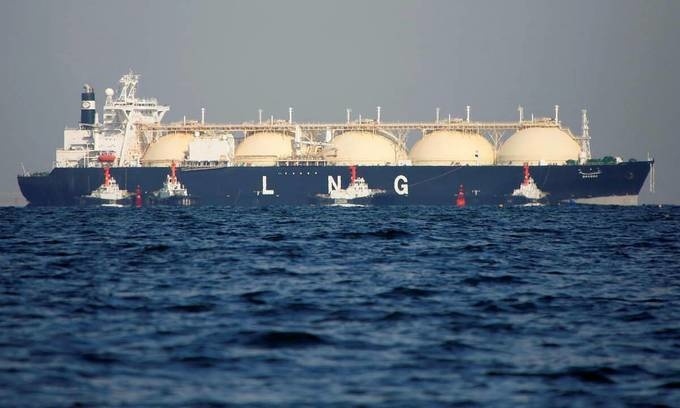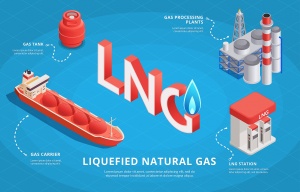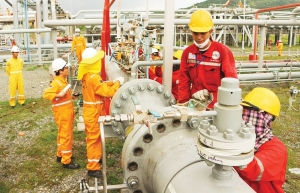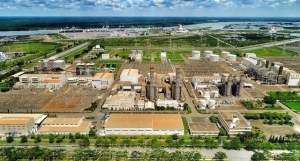Phu My 3 to rely on costlier LNG
 |
The handover also signifies the expiration of Phu My 3's contractual agreements, including its gas and electricity purchase contracts. “This means the plant will not have ready access to the necessary fuels and resources for continuous operation, nor can it ensure stable power delivery immediately after the transition,” said an official source.
At present, the MoIT is supporting Vietnam Electricity (EVN) as it prepares to assume operational responsibilities for the plant, aiming to ensure a seamless transition, uninterrupted power supply, and the maintenance of quality standards.
While the official recipient of Phu My 3 is yet to be determined by the government, the pressing issue is sourcing the requisite fuel to sustain its operations.
The facility, boasting a contractual capacity of around 717MW, employs mixed-cycle gas turbine technology, primarily sourcing natural gas from Vietnam's Oil and Gas Group (PetroVietnam) via its subsidiary, PV Gas. The plant consumes approximately 0.85 billion cubic metres of gas annually.
Initially, the BOT Phu My 3 power plant saw investments from Sembcorp, and Kyuden International and Sojitz. Since commercial operations began on March 1, 2004, the plant has generated around 92 billion kWh as of August this year.
According to PV Gas, following the handover in March next year, Phu My 3 will rely solely on imported liquefied natural gas (LNG) as domestic natural gas allocations have been earmarked for long-term contract holders.
PV Gas forecasts indicate that by 2024, natural gas supplies in the southeastern region will amount to 3.06 billion cu.m, dropping to approximately 2.61 billion cu.m in 2025. This would cover a mere 33 per cent of the fuel requirements of power plants in the area.
"There is no more available domestic gas. Hence, fuel for soon-to-be-transferred BOT power plants, such as Phu My 3 and subsequently Phu My 2.2, can only come from imported LNG," revealed a reliable industry source.
The cost of importing LNG into Vietnam currently stands at between $10- $12 per million BTU. After accounting for storage, regasification, and transportation expenses, the price at the plants' gate could rise to $12-$14 per million BTU - a staggering 1.5 times higher than existing domestic gas prices.
PetroVietnam, the entity responsible for managing the domestic gas extraction resources, holds a vested interest in the Nhon Trach 1 (450MW) and Nhon Trach 2 (750MW) power plants, both of which share gas resources in the Southeast region. Additionally, the Phu My Fertiliser Plant, in which PetroVietnam also has a controlling stake, relies on domestic natural gas resources from the same region.
PV Gas has completed the first phase of the Thi Vai LNG storage facility, boasting a capacity of about 1 million tons per year with an LNG tank with a volume of 180,000 cu.m. This corresponds to additional gas supplies of 5.7 million cu.m per day and 1.4 billion cu.m per year, readily available for the power plants in Phu My and Nhon Trach.
Energy experts suggest that if PetroVietnam prioritises cheaper domestic natural gas for the power plants it has direct and indirect stakes in, these plants will have a significant competitive advantage over other regional plants that rely on pricier imported LNG.
This approach would stifle innovation and optimisation in power plants using imported LNG, as fuel costs account for 70-80 per cent of electricity prices. The disparity in gas costs translates to a difference of more than VND1,100 per kWh in electricity prices.
Given this, it is imperative for regulatory authorities to ensure consistent gas pricing for electricity in the Southeast region.
Overall, from 2024 onward, Vietnam's power grid is expected to be increasingly fed by electricity derived from imported LNG. "This means new pressures are on the horizon, and without early and effective preparation, the challenge of providing a stable, continuous power supply will become more daunting," an industry insider told VIR.
 | Vietnam's LNG power projects face contractual hurdles and rising import costs Vietnam's ambitious journey into liquefied natural gas (LNG) power projects is facing stumbling blocks, as protracted contract negotiations threaten the progress of key initiatives. |
 | LNG conversion strategy ramps up to ensure power sources for Vietnam The plan to develop 22GW of liquefied natural gas-to-power projects, along with the government’s commitment to reduce emissions, is creating vast opportunities for Vietnam’s thermal power developers to make an energy transition and gradually phase out coal. |
 | EVN to take over BOT Phu My 3 thermal power next year The Ministry of Industry and Trade and the operator reached a compromise to transfer BOT Phu My 3 thermal power plant to EVN in March 2024 and BOT Phu My 2.2 in February 2025. |
What the stars mean:
★ Poor ★ ★ Promising ★★★ Good ★★★★ Very good ★★★★★ Exceptional
 Tag:
Tag:
Related Contents
Latest News
More News
- Honda launches electric two-wheeler, expands charging infrastructure (January 12, 2026 | 14:00)
- Vietnam striving to ease air pollution (January 09, 2026 | 14:41)
- Petrovietnam Gas awards first multi‑year LNG deal to Shell (January 09, 2026 | 14:38)
- Advancing the net-zero journey: Carlsberg Vietnam’s sustainability progress in 2025 (January 09, 2026 | 09:49)
- The green hydrogen and ammonia future for Vietnam (January 06, 2026 | 15:03)
- Green transition to close $20 billion annual investment gap (December 31, 2025 | 11:59)
- Australia contributing to Vietnam’s climate change responses (December 30, 2025 | 11:37)
- CME Solar strengthens position in Vietnamese renewables (December 30, 2025 | 11:21)
- Self-care signals shift towards sustainable healthcare (December 30, 2025 | 10:12)
- GreenYellow marks five years of clean energy growth in Vietnam (December 26, 2025 | 15:51)




















 Mobile Version
Mobile Version